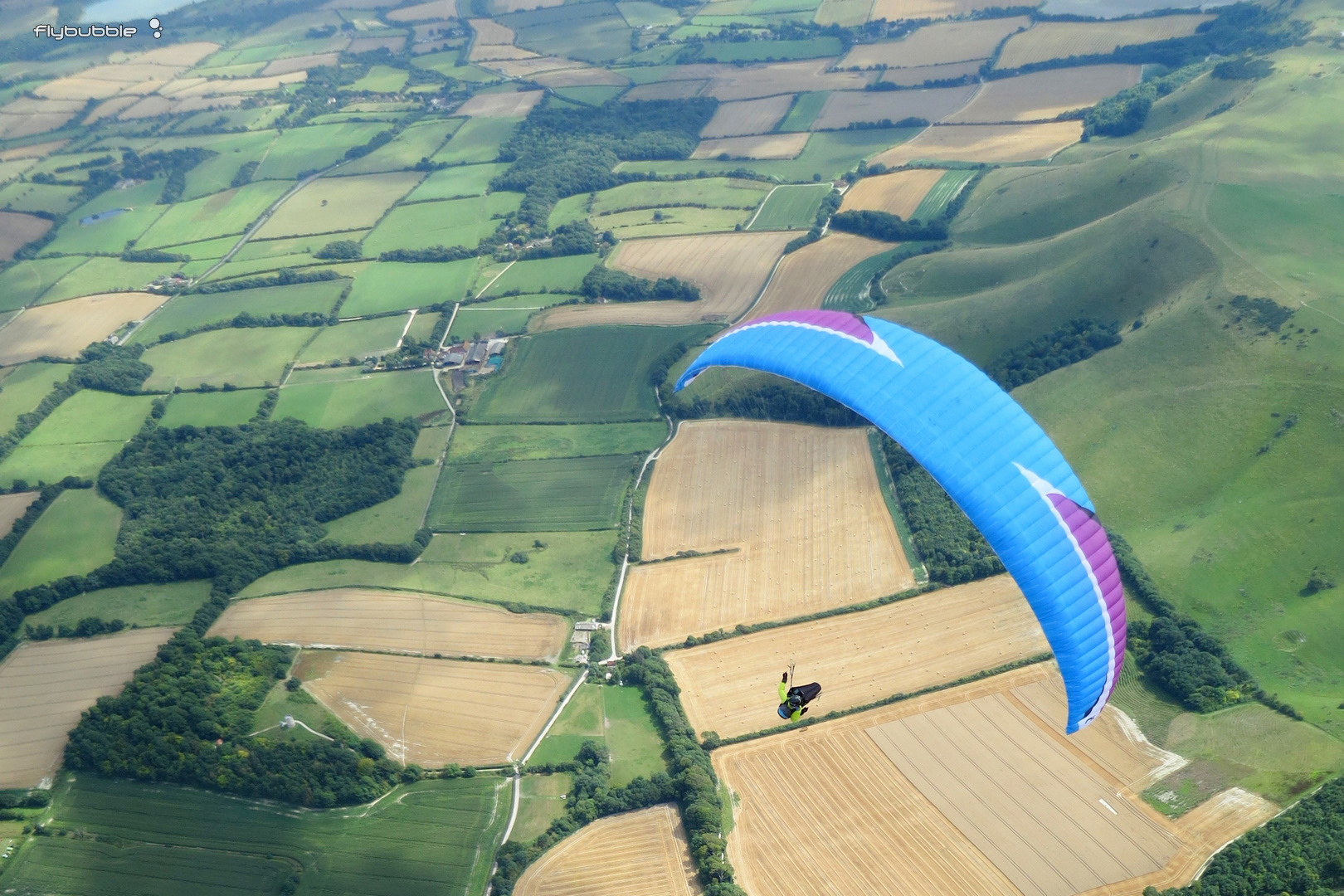
"You should've been here earlier, it was much better!" a pilot told me smugly as I was setting up my flying kit at Bo Peep.
I'd actually flown earlier (doing our dealer checks on a new wing) and didn't like the conditions; easy to stay up, but windy, so the thermals were all broken up. 'Better conditions' depends on what you're wanting to do with your flying.
We all look for different things. If you're still learning the basics, you want cloudy, gentle days with no thermals. If you want airtime, strong wind is simplest, although it comes with increased risk. But if you want to be free from the hill and go exploring, you need to aim for a specific kind of flying conditions.
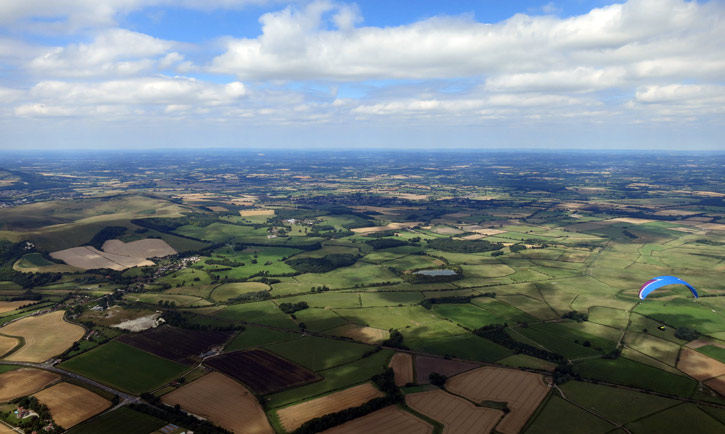 Light wind days are made for flying together
Light wind days are made for flying togetherIs strong wind best?
For downwind XC it's useful to have a base wind, but big numbers can be a distraction. When the wind is weak, it isn't so easy to stay up; you have to time it right and make use of thermals. You'll develop essential skills here. It is more challenging than soaring up and down a windy hill, but flying in less wind also means you're freer to go where you want, when you get up.
Watch the conditions, look for changes
On light wind days, there's often a narrow window when it's really good. Don't miss it! Watch the birds, smoke, clouds and other wings for signs of changing conditions. On the day in question, my timing was right: I found a thermal in front of launch and climbed out. I saw pilots doing well towards Firle Beacon so joined them. My partner Nancy soon caught up, whilst my friend Pete, only slightly later, had to work harder to get up. After step climbing our way up through the stable layers, we all reached cloudbase. Time for an adventure! We glided off towards Mount Caburn.
Fly as a gaggle
To increase our chances we worked together, catching a climb off the Vintage Summer Fair and working the broken bits of lift we found along the way. Cooperating helps, especially when the lift is weak, broken and elusive. Eventually we got up to base again over the hills to the east of Lewes. Nancy decided to fly home to Ringmer; Pete and I aimed for Bo Peep. We were unlucky, or chose the wrong line, and had a very sinky glide, so Pete landed on top of the hill at Firle.
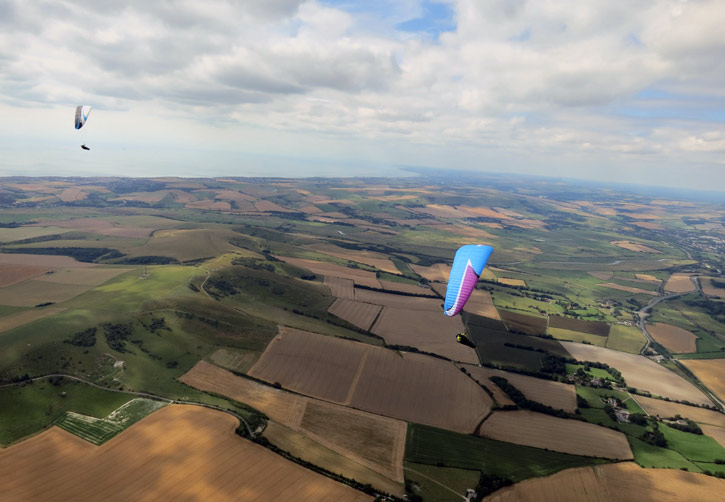 Working together increases success, especially when you increase the search area
Working together increases success, especially when you increase the search areaAs long as you have good landing options, never give up
There were sea breeze front clouds just to the south, and some birds milling around over the stubble fields over the back hill, so I took a low level glide towards them. It was the only chance of getting up, and if I didn't work I'd just have a short walk back. Since my kit is quite light, and I quite like walking anyway!
Patience is often the difference between landing & staying up
I found a scrappy thermal near the Firle launch area. I can't call it a climb as I was actually slowly going down in it, trying to find the core as I drifted slowly south. Since the ground was dropping away below me, I was just maintaining ground clearance while drifting. After a few minutes of chasing my tail, the thermal eventually strengthened into a decent climb, up to 3,000 ft.
Move to the best lift if it's within reach
There was a good looking cumulus ahead and I could see a pilot climbing further upwind, so I took a gamble and left the weak climb I was in. I found a good climb under the cumulus and didn't have to work much to get up to base. If I'd waited until the weaker climb had eventually run out of steam, the stronger thermal cycle might have ended too, leaving me with nothing but sink in a large area.
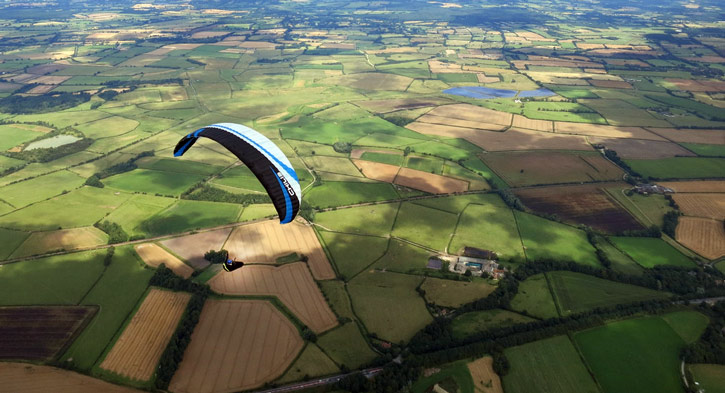 Watch other pilots for signs of lift. Someone else climbing faster? Glide on over!
Watch other pilots for signs of lift. Someone else climbing faster? Glide on over!The reward?
High above the terrain, I could enjoy an effortless glide on my Niviuk Artik 4, marvelling at the scenery, without the stress of ridge-soaring traffic or risky winds. Being high is the safest place to be on a paraglider: there's space for the wing to recover from any kind of turbulence, the landing options are numerous, and there's absolutely nothing to fly into.
I floated into the flats then hooked another thermal, just to enjoy the feeling of drifting gently, silently, back to my van. Light wind days really give you a sense of freedom!
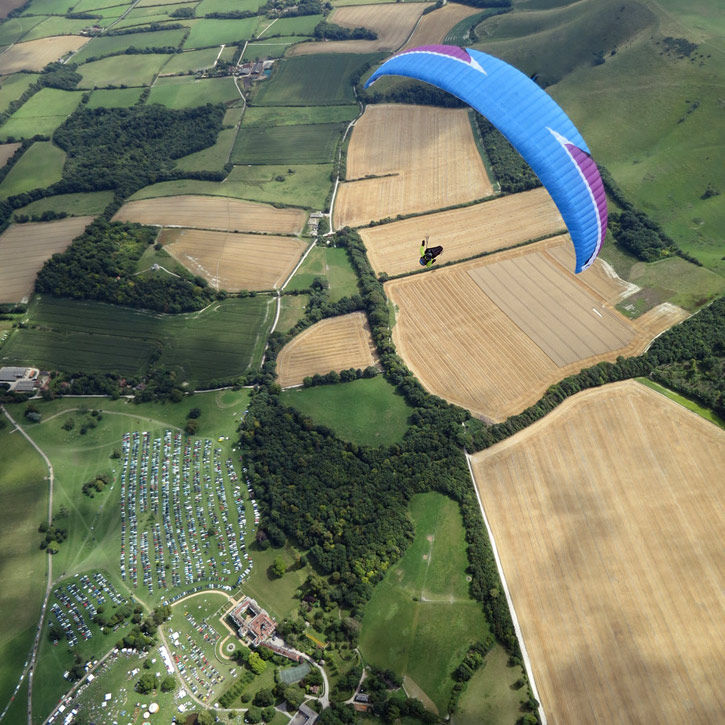 Nancy climbing out above the Summer Fair.
Nancy climbing out above the Summer Fair.Flight track on a map
Brought to you by Flybubble
Like what we do? There's no better way to thank and supports us than buying gear from us and recommending us to others. Thank you!

.jpg)